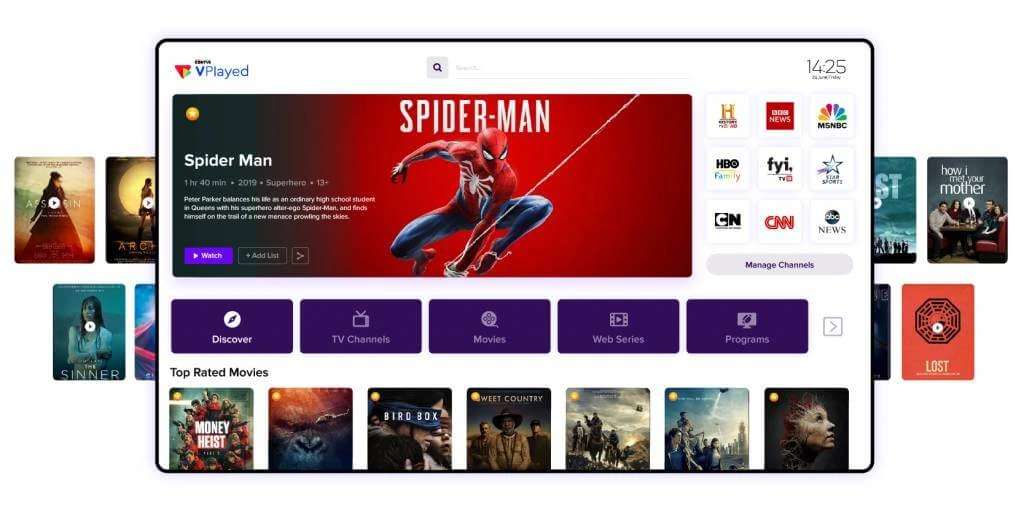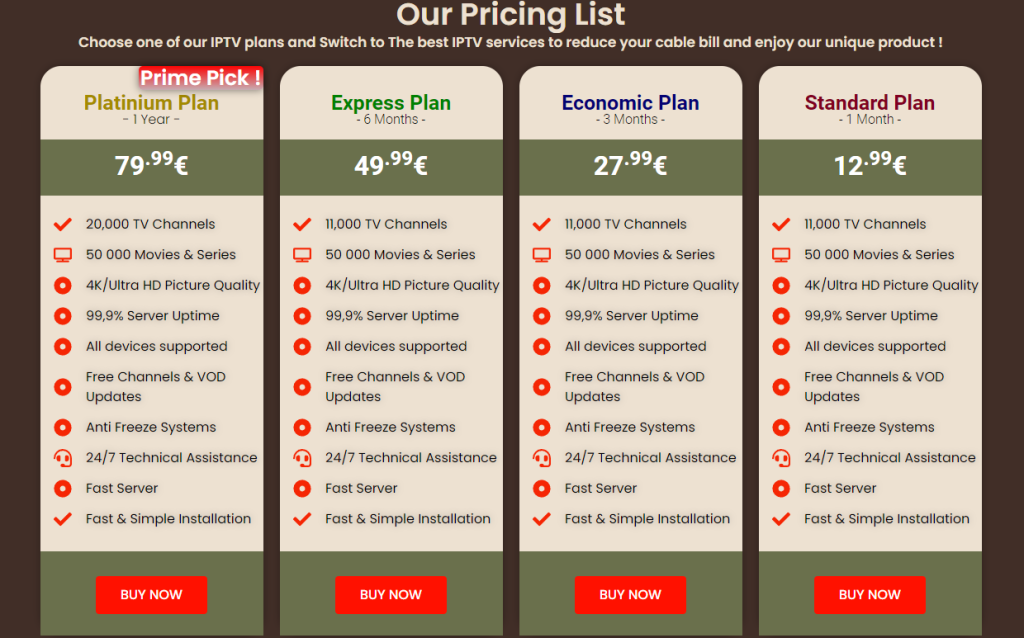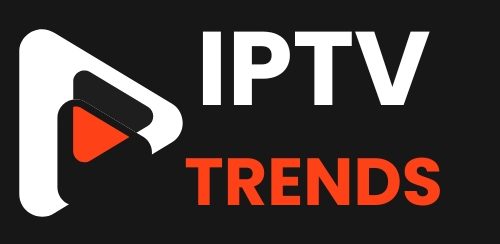
Introduction
Introduction to IPTV and Cable TV
Internet Protocol Television (IPTV) and Cable TV are two primary methods through which households access television content. IPTV Trends uses the internet to deliver television content, while Cable TV utilizes traditional coaxial or fiber-optic cables. Understanding the fundamental differences, benefits, and limitations of each service can help consumers make an informed decision. With services like IPTV Trends, consumers can access a wide range of content effortlessly.
Relevance and Importance of Choosing the Right TV Service
Choosing the right TV service is crucial as it affects the quality of viewing experience, cost, and the variety of available content. With the evolving media landscape, where streaming and on-demand services are becoming more popular, it’s important to evaluate which service aligns better with individual needs and lifestyle. Platforms like IPTV Trends are at the forefront of this shift, offering diverse and flexible viewing options.
Historical Context
Evolution of Cable TV
Cable TV has been around since the late 1940s, originally developed to enhance television signal reception in areas with poor over-the-air reception. Over the decades, Cable TV has evolved to offer hundreds of channels, premium content, and advanced features like digital video recording (DVR). The technology behind Cable TV has continuously improved, providing better picture quality and more reliable service.
Development of IPTV
IPTV, on the other hand, is a more recent innovation, gaining traction in the early 2000s. Leveraging internet infrastructure, IPTV provides on-demand content, live TV, and interactive features. It represents a shift towards more flexible and personalized viewing experiences. IPTV has rapidly advanced, driven by improvements in broadband internet speeds and the increasing prevalence of smart devices. Services like IPTV Trends are leading this evolution, providing cutting-edge features and extensive content libraries.
Technical Specifications
How Cable TV Works
Cable TV transmits television signals via coaxial or fiber-optic cables directly to consumers’ homes. The signal is received by a set-top box, which decodes the channels and displays them on the television. This method ensures a reliable connection and consistent quality of service. The infrastructure is largely based on hybrid fiber-coaxial (HFC) networks, combining the high capacity of fiber optics with the wide coverage of coaxial cables.
How IPTV Works
IPTV delivers television content over the internet using the Internet Protocol (IP). Content is streamed in real-time, requiring a stable and fast internet connection. Users can access IPTV through various devices, including smart TVs, computers, and mobile devices, offering greater flexibility. The technology relies on high-speed broadband connections and often incorporates adaptive bitrate streaming to ensure smooth playback. Providers like IPTV Trends use advanced technologies to deliver high-quality, uninterrupted service to their users.
Types and Categories
Types of Cable TV Services
- Basic Cable: Provides a limited selection of channels, including local networks and a few additional options.
- Extended Basic: Includes all basic cable channels plus additional channels like sports and entertainment.
- Premium Cable: Offers a wide range of channels, including premium movie and sports channels, often with on-demand options.
- Digital Cable: Provides high-definition (HD) channels and digital video recording (DVR) capabilities. Digital cable also offers enhanced audio and additional features like interactive program guides.
Types of IPTV Services
- Live IPTV: Streams live television channels in real-time over the internet.
- Video on Demand (VOD): Allows users to select and watch video content at their convenience.
- Time-Shifted TV: Enables viewers to watch previously aired shows and events at a later time.
- Catch-Up TV: Offers the ability to watch missed episodes of popular TV shows. IPTV services like IPTV Trends often bundle these types into comprehensive packages, providing a holistic viewing experience.
Applications
Use of Cable TV in Different Industries
- Hospitality: Hotels use cable TV to offer guests a variety of entertainment options, including international channels and premium movie selections.
- Healthcare: Hospitals and clinics provide cable TV for patient entertainment and education, often integrating health-related content and information services.
- Education: Schools use cable TV for educational programming and campus news, enhancing the learning experience with dedicated educational channels.
Use of IPTV in Different Industries
- Corporate: Businesses use IPTV for training, corporate communications, and live streaming events, enabling efficient dissemination of information.
- Education: Universities and schools implement IPTV for educational content and distance learning, offering flexibility and a wide range of resources.
- Hospitality: Hotels use IPTV to provide personalized entertainment and information services to guests, including interactive guides and on-demand content. Services like IPTV Trends are particularly popular in these industries due to their versatile offerings and easy integration.
Benefits
Benefits of Cable TV
- Reliability: Consistent signal quality without dependence on internet speed.
- Wide Channel Availability: Extensive selection of channels, including local networks.
- Ease of Use: Simple setup with traditional TV sets and user-friendly interfaces. Cable TV is known for its robustness and the ability to deliver a consistent viewing experience, even in areas with unreliable internet service.
Benefits of IPTV
- Flexibility: Accessible on multiple devices, including smart TVs, computers, and mobile devices.
- On-Demand Content: Extensive library of on-demand movies, shows, and other content.
- Interactivity: Interactive features such as pause, rewind, and fast-forward live TV. IPTV allows for a highly personalized viewing experience, catering to individual preferences and schedules. With platforms like IPTV Trends, users can enjoy a seamless and customizable viewing experience tailored to their needs.
Challenges and Limitations
Challenges with Cable TV
- Limited Mobility: Requires a fixed cable connection, restricting mobility.
- Higher Costs: Premium packages can be expensive compared to some streaming services.
- Less Interactivity: Limited interactive features compared to IPTV. While reliable, cable TV does not offer the same level of flexibility and convenience as modern streaming services.
Challenges with IPTV
- Internet Dependency: Requires a high-speed internet connection for optimal performance.
- Potential Lag: Streaming issues such as buffering and lag can occur with poor internet connectivity.
- Complex Setup: Initial setup can be more complex, requiring compatible devices and software. Despite its many advantages, IPTV’s reliance on internet infrastructure can be a significant drawback for users with inconsistent internet service. Providers like IPTV Trends work continuously to mitigate these challenges by optimizing their services for various internet conditions.
Latest Innovations
Recent Advancements in Cable TV
- Hybrid Fiber-Coaxial Networks: Combining fiber-optic and coaxial cables for faster speeds and better quality.
- 4K Ultra HD: Offering higher resolution and improved picture quality.
- Cloud DVR: Storing recorded content in the cloud for easier access and management. Innovations in cable technology continue to enhance the viewing experience, making it more competitive with streaming services.
Recent Advancements in IPTV
- Adaptive Bitrate Streaming: Ensuring smooth streaming by adjusting the quality based on internet speed.
- AI and Machine Learning: Enhancing content recommendations and personalized viewing experiences.
- Integration with Smart Home Devices: Seamless integration with smart home ecosystems for enhanced control. The rapid development of IPTV technologies is driving its growing popularity, offering more sophisticated and user-friendly features. IPTV Trends, for example, is at the forefront of incorporating these advancements to provide top-notch service.
Future Prospects
Future of Cable TV
- Enhanced Interactive Features: Potential integration of more interactive elements.
- Continued Quality Improvements: Advances in technology could further enhance picture and sound quality.
- Potential for Hybrid Models: Combining traditional cable with internet-based services for more comprehensive offerings. The future of cable TV will likely involve more integration with internet services, creating hybrid models that offer the best of both worlds.
Future of IPTV
- Expansion of 5G: Faster internet speeds could significantly improve IPTV performance.
- Increased Content Personalization: Further development of AI-driven recommendations.
- Growth in VR and AR Content: Potential for immersive viewing experiences with virtual and augmented reality. IPTV’s future is closely tied to technological advancements in internet infrastructure, promising even more innovation and improved user experiences. Providers like IPTV Trends are already exploring these future possibilities to stay ahead in the market.
Comparative Analysis
Cost Comparison
Cable TV often comes with higher subscription fees, especially for premium packages, whereas IPTV can offer more competitive pricing, particularly with bundled internet services. While cable TV provides reliable service, the cost factor can be a significant consideration for budget-conscious consumers.

Content Availability
Cable TV provides a wide range of channels, including local and regional networks. IPTV, however, often has a more extensive on-demand library and can include niche content not available on cable. The breadth of content on IPTV services like IPTV Trends can be a major draw for users looking for specific or less mainstream content.
Quality of Service
Cable TV generally offers consistent quality unaffected by internet fluctuations. IPTV’s quality can vary based on internet speed and stability. Both services have their strengths, with cable TV excelling in reliability and IPTV offering flexibility and a diverse range of content.
Flexibility and Customization
IPTV excels in flexibility, allowing viewers to watch content on multiple devices and customize their viewing experiences. Cable TV is more static, tied to traditional TV sets and scheduled programming. IPTV’s adaptability makes it a strong contender for users who value convenience and personalized content. Services like IPTV Trends excel in providing tailored viewing experiences to meet individual preferences.
User Guides or Tutorials
How to Set Up Cable TV
- Choose a Provider: Select a cable TV provider based on available packages and pricing.
- Schedule Installation: Arrange for a technician to install the necessary equipment.
- Connect the Set-Top Box: Link the set-top box to your TV and cable outlet.
- Activate Service: Follow the provider’s instructions to activate the service.
- Program the Remote: Set up the remote control for ease of use. The setup process for cable TV is straightforward, often handled by the provider, ensuring minimal hassle for the user.
How to Set Up IPTV
- Select an IPTV Service: Choose an IPTV provider that fits your content preferences and budget.
- Ensure Internet Connectivity: Make sure you have a stable and fast internet connection.
- Install the App: Download and install the IPTV app on your smart TV or streaming device.
- Log In and Subscribe: Log in with your credentials and subscribe to the service.
- Customize Settings: Adjust settings for optimal viewing and personalized recommendations. Setting up IPTV can be more complex, but platforms like IPTV Trends provide comprehensive guides and customer support to ease the process.
Visit our Reddit Blog:

